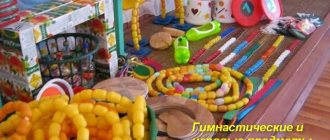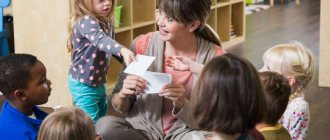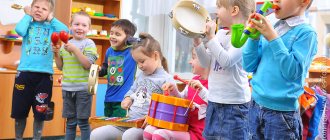Conducting self-analysis
Self-analysis should include the following points:
- target;
- tasks;
- Preparation;
- communication part;
- physical education.
Teachers must be competent
It is imperative to include a person-centered approach.
At the end - summing up.
The analysis includes:
- Subject.
- Date and number of the group in which the event is being held.
- Target.
- Justification for the choice of topic from the point of view of psychology, i.e. must correspond to the general goals and objectives, the context of the topic being studied.
- Observation. This point includes checking how well the goals and objectives of the hour are revealed to the children, whether it encourages the pupils to do any activity, whether it is possible to measure intermediate results, and whether the pupils have drawn conclusions.
- Degree of controllability. How the lesson affected relationships in the group, how the children began to respond to art.
- General assessment of the event. Conclusions are drawn on psychological and pedagogical topics in relation to the teacher and students.
Note! In the process of work, the teacher must take into account the character characteristics of each child.
There are requirements for educators
Methodological aspects
In a preschool institution, goals and methods are established by the state program.
Stages of the method:
- Vocabulary, in the form of a conversation.
- Illustrating. Illustrations on the assigned topic.
- Practical. Modeling of figures related to the theme.
- During the game stage, didactic games on a general topic are used. This process includes a physical education aspect in the form of gymnastics for the fingers and eyes.
- Motivating and rewarding techniques are included.
- It is mandatory to include assessment and control of children’s personal actions and work.
Additional Information! When self-analysis, it is necessary to take into account that information should be presented in the form of a game, involving children in joint activities.
How is the procedure performed?
For correct self-assessment, you should initially decide on the purpose of the lesson. It should be clear and include the initiative of teachers to show educational achievements and innovations in raising children in the older or younger group. Another goal is to show the preparatory level of the teacher in a particular preschool institution.
Using analysis, you can check the following:
- children's readiness for school;
- compliance of the structure and techniques used with state standards;
- the teacher’s ability to interact with children;
- sense of time;
- control of voice timbre and intonation;
- the ability to create the necessary emotional background in a group.
Teachers must be qualified
As a result, shortcomings are identified or their absence is noted.
How the analysis is carried out:
- You are required to write down the age of the children and their number in the group.
- Mark the topics and targets.
- Describe the structure of the lesson, i.e. describe in detail the stages and each action.
- Study in detail the techniques used, describing the objects and theoretical materials used.
- Assess the level of organization and effectiveness of the event. This assessment includes the logic of construction, the speed of the lesson and the teacher’s speech, the emotional level, independence and activity of the children.
- At the end, inaccuracies are assessed and ways to eliminate them are proposed.
Didactic games for the younger group of kindergarten
Additional Information! As a result, the teacher offers an independent assessment of the work done, based on the children’s answers and the general emotional background of the group.
Stages of self-assessment
Self-analysis is a person’s independent assessment of his actions and judgments. The teacher needs to evaluate the children's behavior, the accuracy of their actions and their effectiveness in relation to their goals.
Stages of self-analysis:
- Characteristics of students in the group - number and age.
- The degree of compliance of the selected program with the general system of education standards.
- Checking the logic and validity of tasks and goals.
- Availability of didactic materials on the topic. Using music based on the theme, listening to classical melodies to depict natural features with the arrival of spring.
- Structure of the lesson. There are main stages. They are logically connected and smoothly transition from one to another. Each stage prepares children for the next. The time between them is distributed logically and used profitably. The lesson lasts no longer than 25 minutes. Children do not get tired because there is a change in activity, from exercises for speech development to games or drawing, etc.
- The atmosphere of the event. Pupils need to be interested, that is, in the process it is necessary to offer children a poetic form of speech and some surprises.
- It is necessary to determine speech and other activities and behavior. It is worth considering how many times and who was active, why the rest were passive, how other participants worked, what inspired them to act. The assessment is given only to the quality of the child’s actions, and not to the character or personality traits. Determine the form of children’s work in class: with a team, in a separate group, separately.
- Features of the teacher's actions. The presence of contact perception with children, speech characteristics (tempo, intonation and logic).
- Results. The achievement of goals and objectives, the degree to which the plan and tasks are completed by children are noted. The effectiveness of the techniques and methods used, the thoughtfulness of the presentation of the material. What was not realized from the plans set, and how to achieve this.
Note! Training should include a scientific aspect, a problem side, i.e., highlight weak points in children’s knowledge, clarity, a cognitive part, be understandable, systematic and step-by-step. The program must remain relevant without changing the overall goals and objectives. Federal standardization includes developmental and educational functions.
How to teach your child to memorize numbers and their spelling
Relevance
Monitoring allows you to identify strengths and weaknesses in the educational program of a preschool institution.
Relevance:
- To determine the success and effectiveness of the learning process.
- To train teachers (speech therapists, educators, etc.) to independently analyze and evaluate the dynamics of their work in education.
- Self-analysis of a correctly conducted lesson in kindergarten helps to carry out appropriate management of the state of the educational process.
- Makes it possible to predict the prospects for the development of objects or subjects of learning.
Important! The analysis should reveal the existence of conditions for joint partnership activities between children and adults.
Self-analysis of an open lesson should be carried out with an independent approach
Teacher Self-Analysis Matrix
The lesson self-analysis plan, which I promised to publish and which I adhere to in my work:
- Topic of open lesson;
- Formulation of the problem;
- Problems that are expected to be solved;
- Demonstration material that will help reveal the topic;
- Forms of motivation or problematic situations that I use to awaken children’s interest in the activity;
- How many parts does the lesson consist of? Listing of methods and techniques for each part;
- Game techniques and moments during the lesson;
- Forms of work (in pairs, subgroups, individually, collectively);
- Dynamic game;
- Techniques for speech development;
- Problems during class;
- Analysis of activity, interest, attention of children in the process;
- How was the outcome of the lesson?
- Conclusion.
I write each point in this way: what am I doing and why. I used the technique - I make sure to justify the choice. As they say, not a word is wasted.
I am sure that this approximate plan for self-analysis will be suitable for educators in both the older and younger groups. But I would be very grateful if one of my colleagues complements and criticizes it. As for the volume of self-analysis, I have come across scary numbers - from 7 to 20 pages of printed text. I don’t know who can handle such an amount? Why, one might ask, burden both yourself and management with your opuses and what can you write about for as many as 20 pages?
I think that 3 sheets is quite enough, even too much. You'll just get tired of writing these self-analyses.
I hope you found something useful from the article? If so, show it to your fellow professionals from social networks, and subscriptions to news are still open!
Sincerely, Tatyana Sukhikh! Till tomorrow!
By the way, I recommend reading:
Self-analysis report on practice in a preschool educational institution in the 2nd junior group
PRACTICE REPORT
REPORT – SELF-ANALYSIS
in practice
Full name of the person who completed the internship
in the second junior group
DOW No. _______ for __________
During her internship, she planned her activities taking into account the plan drawn up jointly with the deputy head of the Ministry of Medical Education and approved by the head of the MBOU. The main basis for planning was the Development program edited by L.A. Wenger, "Origins" ed. O.V. Paramonova, through which the educational process of the MBOU, in which I did my internship, is carried out. According to the planning, which included all types of play activities, work activities, and educational activities, I compiled a practice report in which I described in detail all types of children’s activities and work with them. The planned planning of my activities allowed me to correctly plan my work with children, see the prospects for the development of children and correctly distribute types of activities, without missing anything in the work. To set goals and objectives in my work, I used not only the “Program”, educational and methodological manuals, children’s fiction, but also materials collected and filed in folders during my studies in college contributed to my work. For more fruitful work, I made card files of activities during walks, observations, outdoor and didactic games, and physical exercises. Also, riddles, poems, proverbs and sayings were selected, which helped during various routine moments and organization of classes.
In the first half of the day in the morning, much attention was focused on creating a favorable mood in the group through dialogues with children and various games for unity, such as “Call it kindly.” She conducted didactic games in order to develop children’s mental processes of attention, thinking, etc., and also carried out individual work with children in various areas of educational activity to repeat and consolidate the material covered, to encourage children’s desire to work, to improve cultural and hygienic skills. Independent play activities of children were also planned in subject-development activities, where preschoolers learned to divide roles among themselves, discuss the implementation of the rules of the game, and also developed the ability to find something to do according to their hobbies and interests. For myself, I set a goal to create interest among withdrawn children in games with peers, for which I myself played different roles, played role-playing games with the children, used artistic expression and other methods and techniques of influencing children. Every day morning exercises were performed with the children. Preschoolers took part in a variety of activities with great interest, as I sought to make games more diverse, as well as other types of preschool activities, and used gaming techniques and methods, reading fiction, my own experience and encouragement to attract the interest and fascination of children. During the morning reception of children, I did not feel any particular problems, but I would like to note that parents did not always bring their children to the kindergarten according to the working hours, which interfered with the planning of individual work in the morning. But, in general, the planned work in terms of the amount of time for a given period of time was implemented.
Walks and outdoor games were carried out according to the group’s daily routine. During a walk with preschoolers, she conducted observations, outdoor games, and carried out individual work on physical development and labor education. Observations of living and inanimate nature contributed to the development of preschoolers’ judgments about natural objects, the development of children’s love for nature, the development of memory, thinking, and imagination. When carrying out work activities with preschoolers, she used: artistic expression, questions, surprise moments, her own experience, which made it possible to develop in preschoolers the ability to identify natural phenomena, teach them to find cause-and-effect relationships and relationships, develop a sense of care for nature and love for everything around them around.
Outdoor games during the walk were carried out according to the plan I had drawn up; games of moderate and high mobility were used. In outdoor games, the most comfortable situations were formed for the development of physical qualities: agility, determination, strength, stamina; children, attracted by the plot of the game, performed physical exercises with great interest many times, which contributed to the formation of these qualities. At the same time, various tasks on speech development, counting exercises, spatial orientation, etc. were solved.
Individual tasks with preschoolers during a walk were carried out to increase the motor activity of sedentary children, repetition and consolidation of acquired skills in physical development, speech development, elementary mathematical concepts, environmental education, and fine art activities.
At the same time, during the walk, work on the labor education of preschoolers was planned and carried out. I sought to introduce something new into the implementation of work activities, thereby involving 100% of preschoolers in the implementation of work tasks, gradually and constantly interest preschoolers in joint work with the teacher and individual work.
In the evening, I placed great emphasis on conducting role-playing and theatrical games with preschoolers. For myself, I set a goal - to develop in children the ability to use a role on themselves, to carry out a small number of interrelated actions in the game, and also to teach students how to communicate with each other in a joint game. To supplement the role-playing game “Driver”, I conducted joint observations with children of a car supplying food to a kindergarten; construction of a car from a large construction kit; lesson on speech development on analyzing the painting “Ride on the Bus”, fine art activity “Ride on the Trolley”; A competition was held among parents to produce the necessary decorations and materials for this game. I think that the work on implementing and developing role-playing and theatrical games was a success better than any other activity; I was attracted to observe preschoolers during the games, play with them, create problematic circumstances and come to the aid of the students to find a way to resolve these problems. It was also possible to interest uninitiative preschoolers in playing games together with other children.
Throughout the entire shift, during all regime moments, I carried out activities to educate and improve cultural and hygienic skills, both individually and as a group. She used poetic words, reminders, explanations, her own demonstration and encouragement.
During the internship period, emphasis was also placed on developing preschoolers’ work aspirations and skills. Throughout the day: on a walk, when preparing for classes, when working in a corner of nature, she constantly involved students in work, either one at a time or as a full group, with the help of requests and tasks. The guys began to work with interest with me and the rest of their peers. At the end of the practice, it was possible to realize the intended goals and objectives; the preschoolers eagerly carried out various types of tasks, sought to help me in everything, and sought to carry out work assignments in good faith.
Considering the activities carried out, it can be noted that I was not able to realize all the goals and objectives set during the classes, since there were a large number of students. With a subgroup of preschoolers, the tasks and goals provided for by the program were implemented by me 100%, the allotted time was spent, and the classes were carried out responsibly and productively.
In labor development activities, both as a whole group and individually, we managed to implement all our plans.
During the gaming activity, she was also able to carry out all the planned activities and implement the tasks that were planned. Preschoolers easily joined in role-playing games, embodied roles with enthusiasm, performed actions with enthusiasm, and applied attributes to games and objects as substitutes. But some pupils refused to play together, preferring to play alone, so individual work was planned with these pupils to develop their sense of mutual communication and mutual assistance towards each other.
During my internship I used the following methods:
1. Visual: observation, showing, demonstration, image;
2. Verbal: explanation, story, explanation reading;
3. Gaming: didactic games, role-playing situations, outdoor games.
When conducting classes, she used surprise moments, posed problems for preschoolers, demonstrated a sample with discussion, explained, and helped.
Among the difficulties that arose during the internship, it should be noted the need to establish contact with a large number of new people and adapt to the work schedule. In addition, speaking at a parent meeting showed the need to develop one’s oratory skills.
In her work, in the opinion of the teacher and deputy head of medical education, she has established herself as a hardworking and conscientious specialist. I believe that I received a high rating because I planned the lessons in advance and with full dedication, applied all the teaching methods and techniques in my work, and also managed to interest preschoolers and organize their activities.
Working in a kindergarten during my internship gave me pleasure and gave me a chance to realize my creative, acting and organizational capabilities.
Date Signature__________



